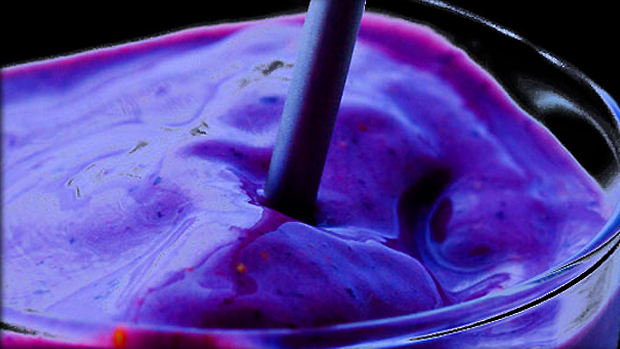Mmm, Smells Like...
- Mac and cheese
- Roses
- Feet
- Crackers
- Apricots
- That old people smell
Based on this list, you might guess I was describing the aromas that might greet/assault your nose whenever you visit your nanna and papa's house, but that's not where I was going.
Those smells are actually among the hundreds detected in molecules of meat by flavor scientists working for Impossible Foods, inventors of the revolutionary, completely plant-based Impossible Burger.
Neurologists working for the company determined that the only way to duplicate the experience of eating an all-meat burger was to capture the smell, taste, sight, and sound of real meat. If they got all that right, the brain would recognize the food as a conventional hamburger, even if it didn't contain any actual meat.
So they hired flavor scientists, food engineers, more neurologists, and nutritionists to analyze every sensory aspect of meat. They found that wheat protein could recreate the fleshy texture of beef, while potato proteins would give it a crispy texture when seared.
They put in flakes of coconut oil so the product would sizzle when it hit the grill. They added konjac and xanthan gum to make the ingredients stick together like meat.
And most impressively, they isolated and added heme protein from soy. Heme is the molecule in blood that carries oxygen to the blood and the reason blood is red, but it's also found in plants. It gives the Impossible Burger its red, completely meat-like appearance, smell, and taste, and it even turns brown when it hits the grill.
It's a completely acceptable, fairly satisfying burger, but the company is already trumpeting the taste-merits of its upcoming Impossible Burger 2.0, which, in addition to being gluten-free, will taste like what one food writer said was "well massaged Kobe ribeye."
It's an impressive invention, as is the Impossible Burger's main competitor, the Beyond Burger (made with pea protein and beet juice to give it its red color), but do we gain anything from these products nutritionally? If you're not a vegetarian, is there any reason to choose one instead of a traditional meat burger?
The Nutritional Scorecard
Three ounces of Impossible Burger will provide the following:
- Calories: 220
- Protein: 20 grams
- Fat: 13 grams (10 grams saturated, mostly from the coconut flakes)
- Carbohydrate: 5 grams
- Fiber: 0 grams
- Sugars: Less than 1 gram
- Sodium: 430 mg.
Compare that with three ounces of raw beef (93% lean):
- Calories: 164
- Protein: 22 grams
- Fat: 8 grams (3 grams saturated)
- Carbohydrate: 0 grams
- Fiber: 0 grams
- Sugars: 0 grams
- Sodium: 56 mg.
The Impossible Burger is substantially higher in calories, but that's because of all the coconut in the product (but coconut fat, with its high percentage of MCT, is often regarded as a healthier fat). The protein content is close, but the protein in meat has a higher biological value than vegetable protein and, as such, is a better muscle builder.
The big difference is in sodium content. The Impossible Burger has about 8 times the amount of sodium in a beef patty, but you'd probably end up salting the beef burger more than you would the Impossible Burger, so it might end up being a wash.
As far as nutrients, the Impossible Burger will give you about as much iron (the more readily available kind) as red meat, along with a comparable amount of zinc and B vitamins (the latter of which are ordinarily hard to come by for vegetarians).
One area in which the Impossible Burger is the clear victor, though, is in polyphenols, which are healthful plant chemicals. A regular burger contains none of them, at least until you lay on the lettuce, tomato, and catsup.

Is the Impossible Burger Safe to Eat?
The big controversy involving the Impossible Burger is the heme, which is a concern to people frightened of GM foods. The company has allegedly run multiple safety studies and the product has received a GRAS (Generally Recognized as Safe) rating from the FDA, but some people are still skittish.
Others may be wary of heme because it's derived from soy, but that's a non-issue as heme is just heme – it doesn't contain any of the controversial, estrogen-mimicking soy isoflavones that are responsible for soy's notorious reputation.
Aside from that, the whole heme issue is a little odd in one respect. While heme is found in cow blood, there's hardly any visible blood in the meat you buy from the butcher or grocery store.
Instead, the red color comes from the protein myoglobin and not from blood or heme. Regardless, the company put the heme into the burger to fool you into thinking it's a bloody burger, but heme isn't what causes a real burger to be red in the first place!
Of course, adding actual myoglobin from real meat would have disallowed the use of the "100% vegetable" label. However, the heme in the Impossible Burger does have a real purpose – it adds a meat-like flavor and smell to the product, and the fact that it turns brown upon heating is a nice theatrical touch (again fulfilling the sensory aspects of the faux burger).
Advantages of Eating the Impossible Burger?
If you love your Earth, the advantages of this veggie alternative are clear. Impossible Foods claims they can produce the product using a fourth of the water and less than 4% of the land while emitting less than one-tenth the greenhouse gases required to make a conventional meat burger.
Functionally, the second-generation version of the meat, due to be released in grocery stores by the end of the year, will be able to take more diverse forms than just patties. Version 2.0 will be able to substitute for ground beef in any recipe, from taco filling to mamma mia meatballs.
Healthwise, it's a little bit more complicated. If I had my choice between an Impossible Burger and a non-organic meat burger, I'd go with the Impossible Burger every time. If the choice were between the vegetable burger and an organic burger, I'd make the decision based on what I'd eaten that day. If I'd already had a substantial amount of plant-based food that day, I'd go with the organic burger.
If not, I'd chow down on the Impossible Burger.





